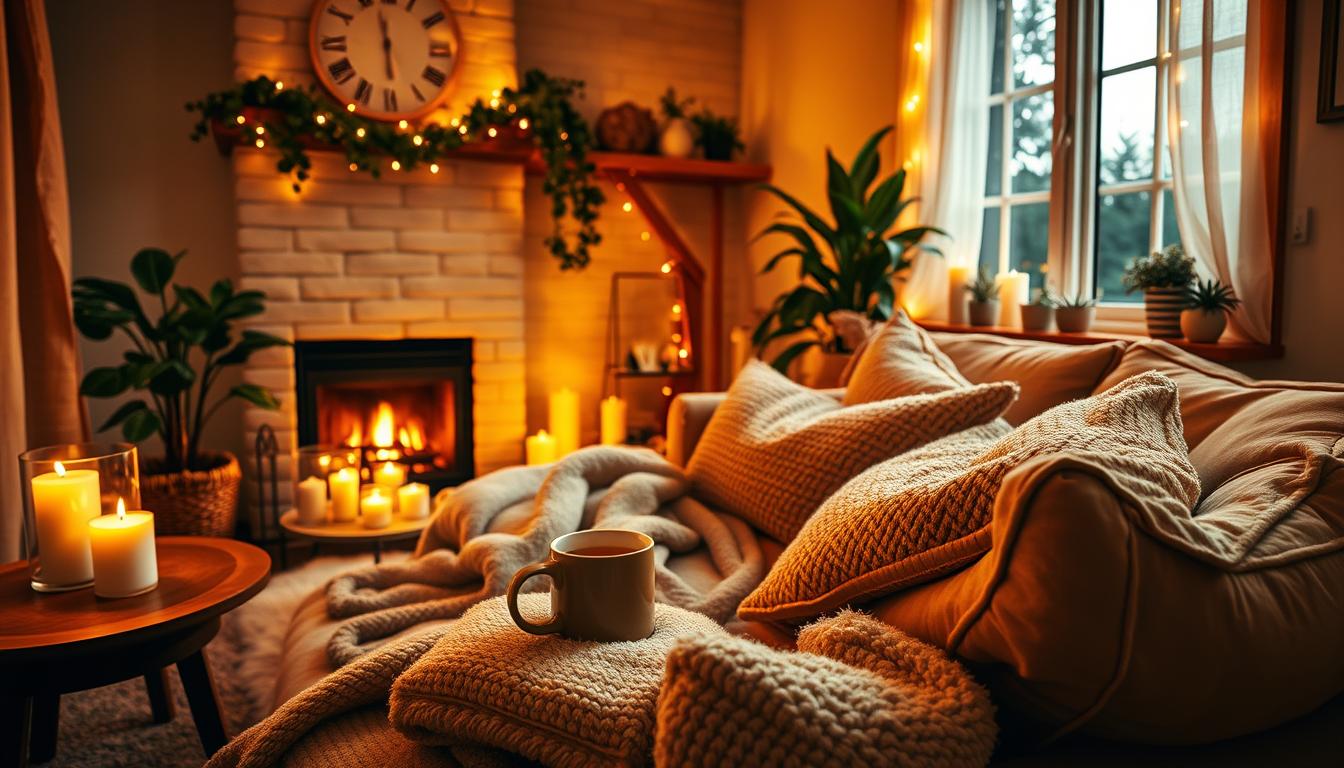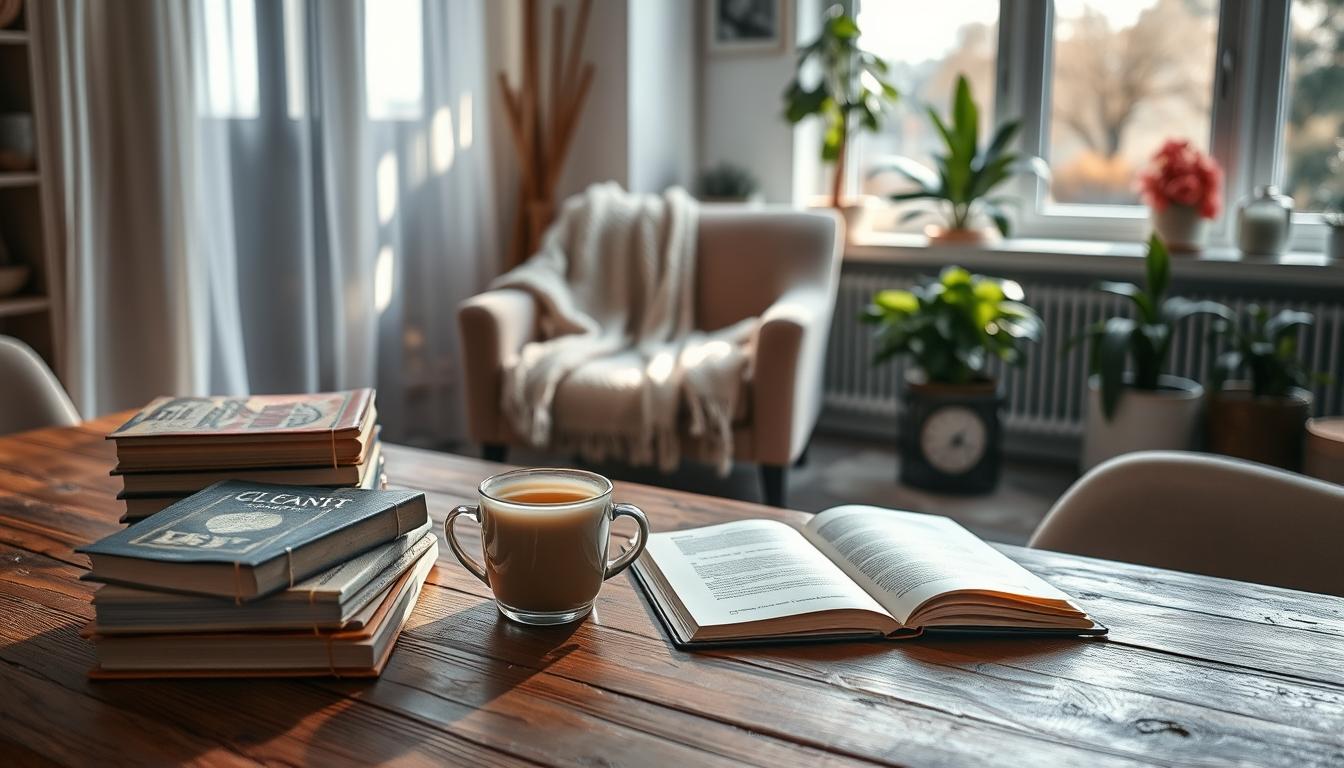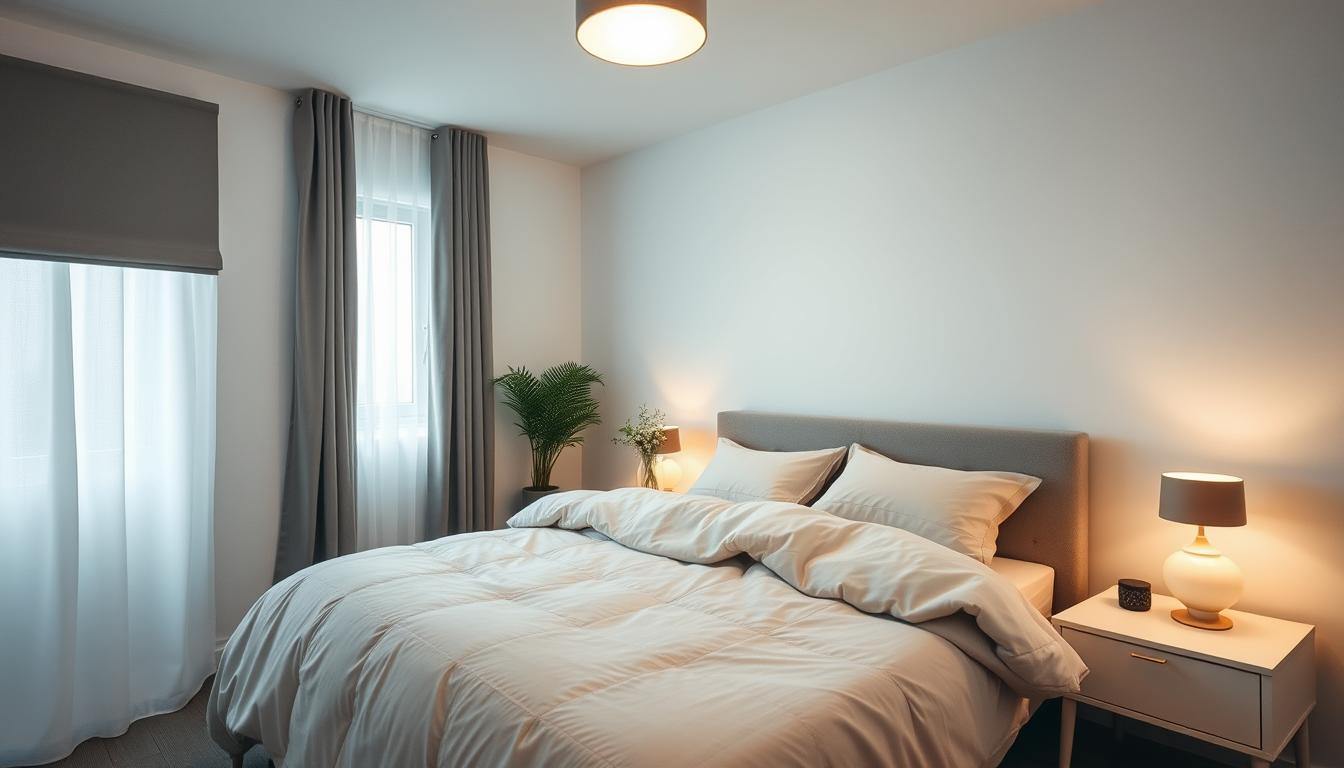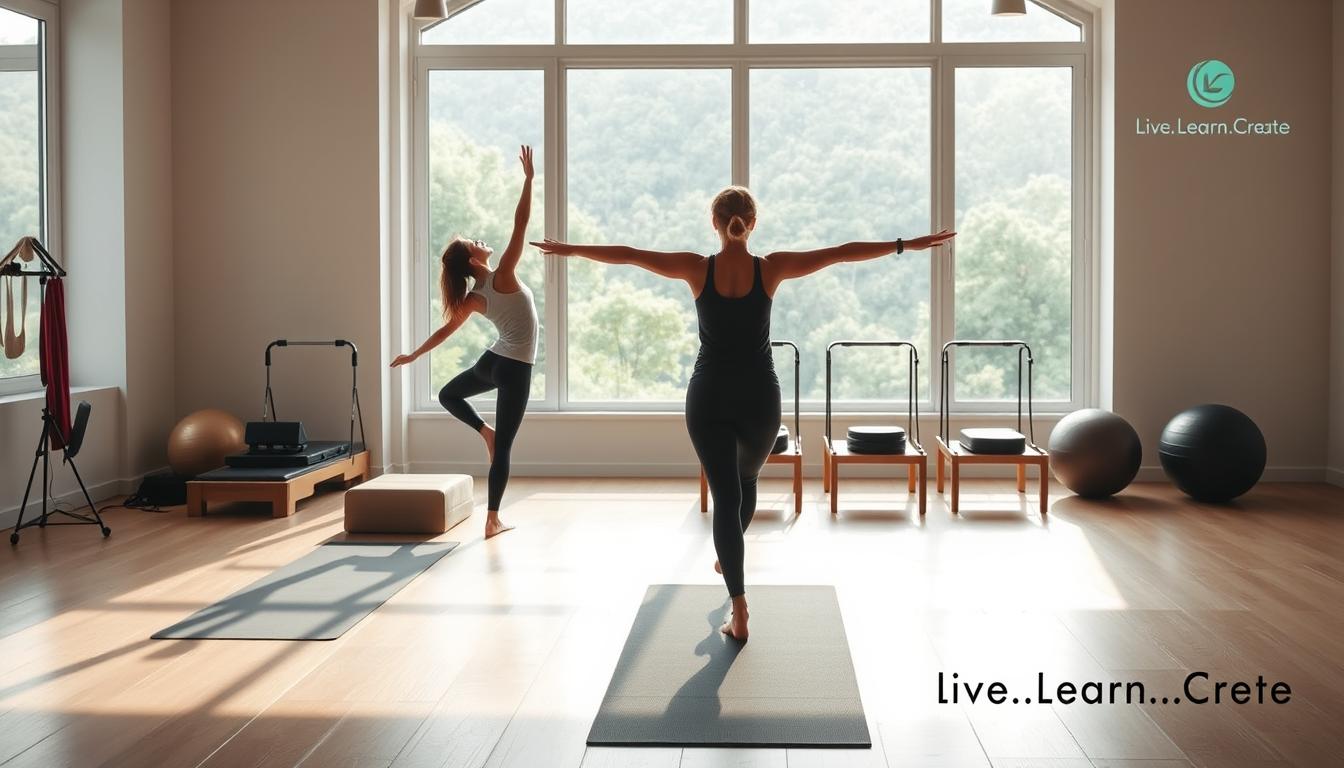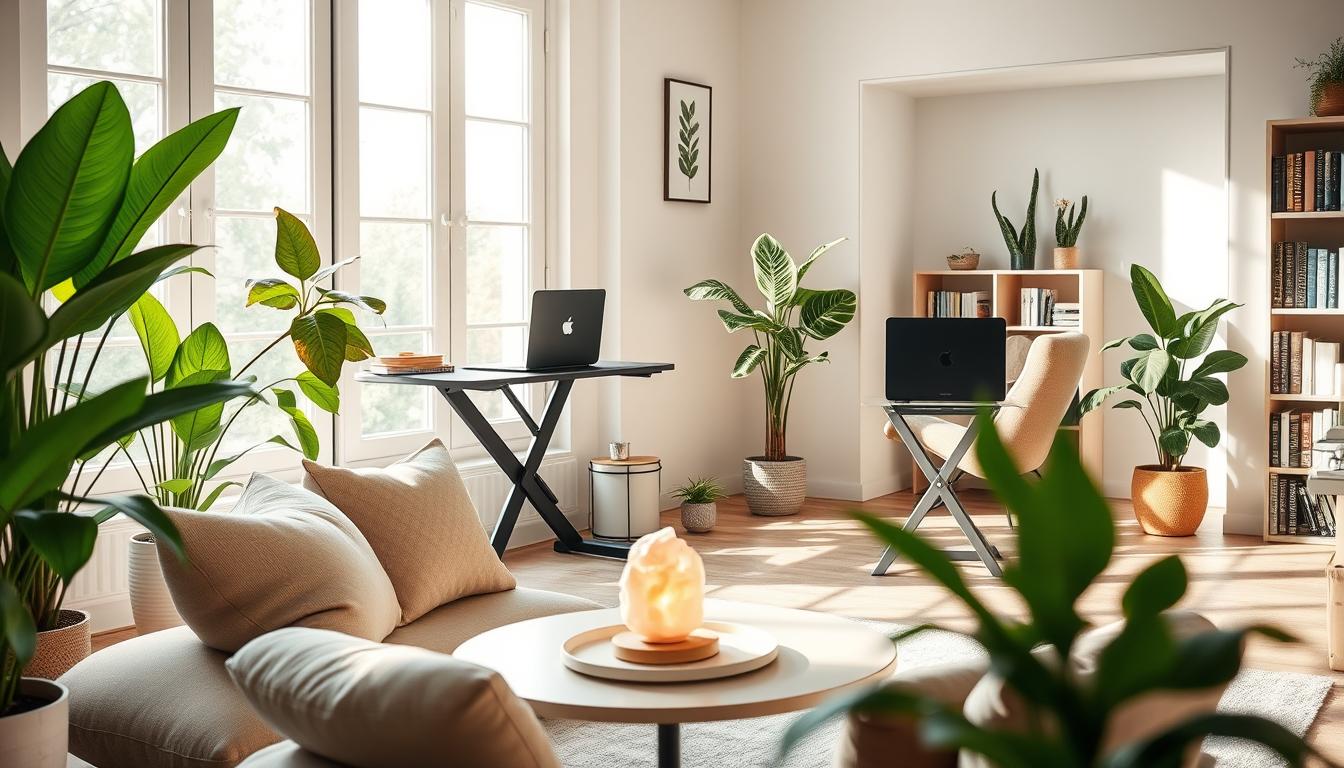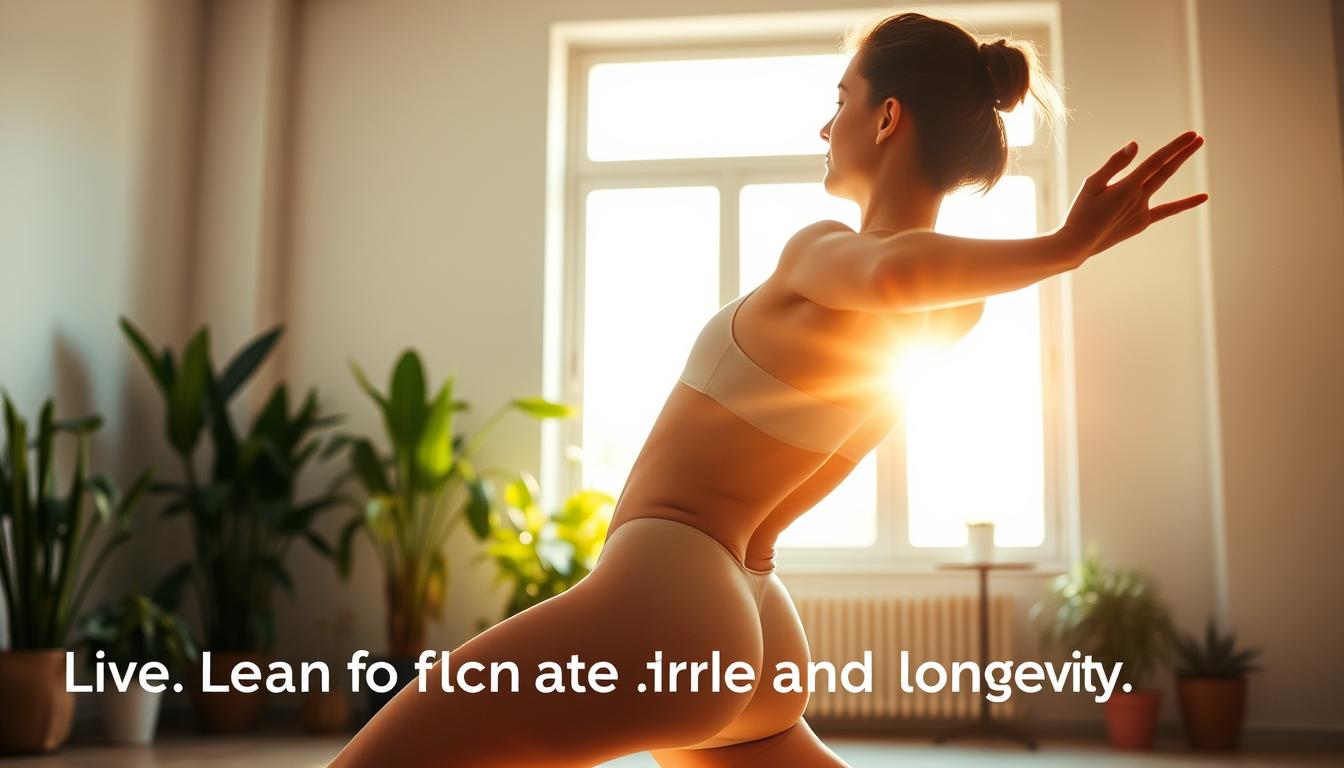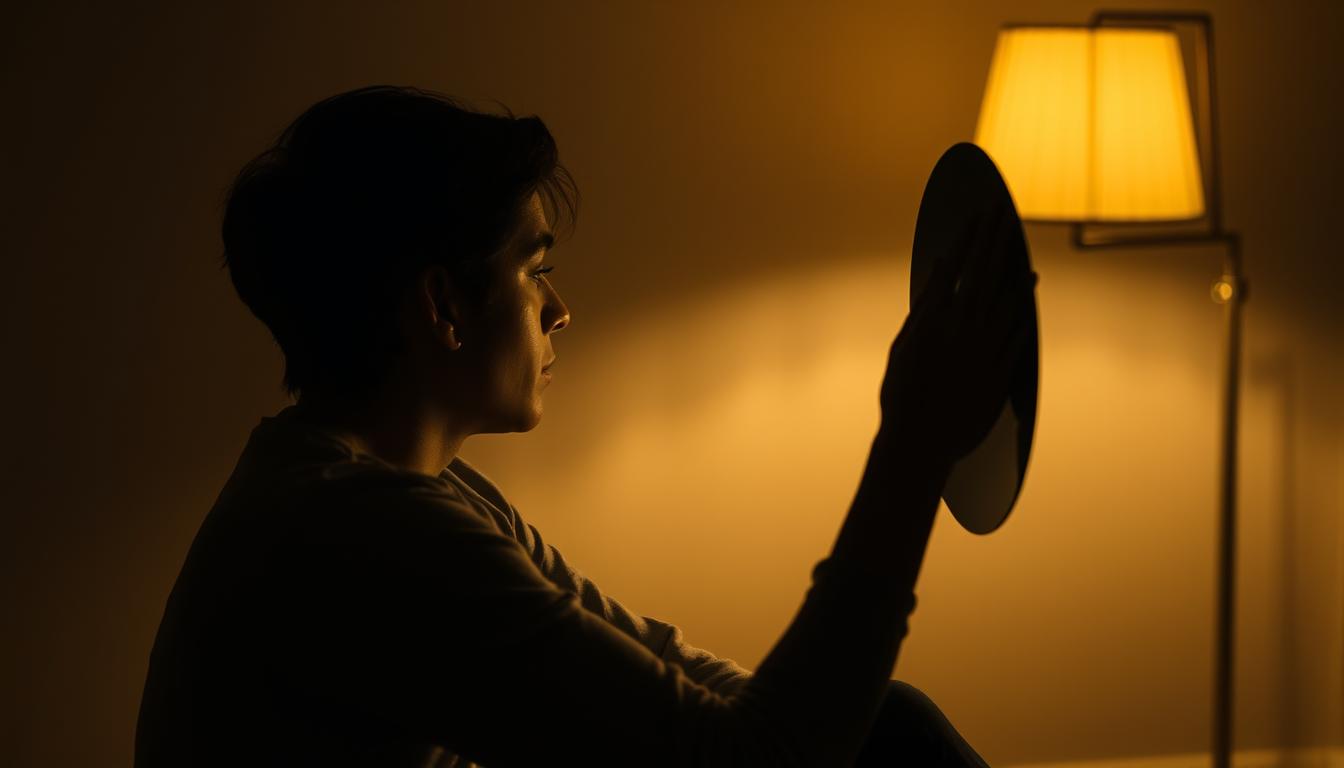Modern life can be tough, making it hard to find peace. “There’s a lot of comfort in being in your own company, in being alone.” – Charlotte Rampling. This quote shows what hygge is all about. It’s a Danish way to enjoy the cozy parts of life, urging us to slow down and cherish the little things.
Hygge is about living a life full of warmth, comfort, and being together. It means adding soft blankets, warm lights, or scented candles to your self-care routines. This way, you can make your Self-Care & Wellness more cozy and thoughtful.
Key Takeaways
- Understand the concept of hygge and its benefits for self-care.
- Learn how to incorporate cozy elements into your daily routine.
- Discover products on Amazon that promote relaxation and comfort.
- Embrace a lifestyle that values warmth, comfort, and togetherness.
- Transform your self-care routine into a cozier and more mindful practice.
Understanding Hygge: The Essence of Comfort
Hygge is all about creating a cozy space that soothes both body and soul. It’s a big part of Danish culture, focusing on warmth, coziness, and being together.
What is Hygge?
Hygge (pronounced hoo-gah) is a Danish word for feeling content, comfortable, and warm. It’s about enjoying the little things in life and finding happiness in everyday moments. By adding mindfulness practices to our daily lives, we can really get what hygge is all about.
Think about having a warm cup of coffee on a cold morning, all snuggled up in a blanket. Or sharing a tasty homemade meal with the people you love. These moments are all about hygge, bringing warmth and a sense of belonging.
The Cultural Roots of Hygge
Hygge is deeply rooted in Danish culture, where family and friends are very important. It’s connected to Denmark’s history and how people coped with tough winters and hard times. Knowing where hygge comes from helps us see how it supports mental health tips and well-being.
In Denmark, hygge is linked to getting together, eating meals, and making cozy spaces. It’s a way to make a welcoming atmosphere that brings people closer and makes them feel at ease.
Benefits of Embracing Hygge
Embracing hygge can really help our mental and emotional health. By making our surroundings cozy and comforting, we can lower stress and anxiety. This leads to a calm and relaxed state. Adding hygge to our daily lives also encourages mindful living, helping us enjoy the moment and find happiness in small things.
The main benefits of hygge include better mental health, feeling more comfortable and relaxed, and feeling closer to others. By embracing hygge, we can build a more positive and strong mindset, ready to face life’s ups and downs.
The Connection Between Hygge and Wellness
Hygge is all about creating a cozy atmosphere that makes us feel good. It’s about taking care of our body and soul. This shows how important hygge is for our mental and physical health.
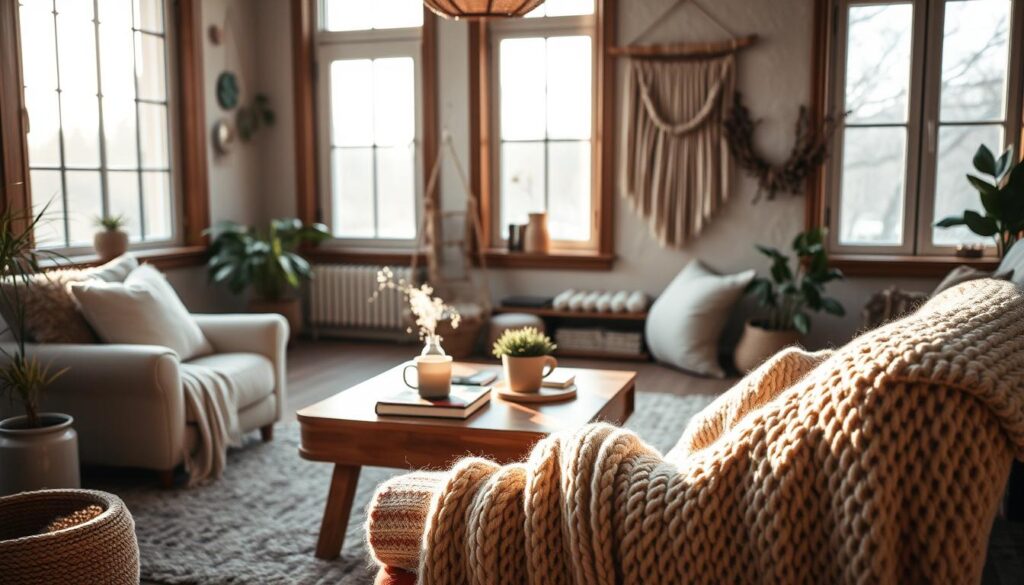
How Comfort Affects Mental Health
Comfort is key in hygge and it greatly affects our mental health. A comfy environment can really help lower stress and anxiety. This is where stress management techniques like meditation and yoga come in. They help us relax and feel calm.
Hygge also encourages us to enjoy simple things. Like reading, sipping coffee, or walking outside. These moments of comfort can greatly improve our mental health.
The Role of Environment in Well-being
Our surroundings are very important for our well-being. By adding hygge elements like natural light and comfy textiles, we can make a space that’s good for us. This ties into holistic health practices, focusing on our whole self – body, mind, and spirit.
Using natural materials and soft colors in our homes can make them cozy. Also, having a tidy and well-lit space can boost our mood and well-being.
By embracing hygge, we can improve our health. It’s about living a life that values comfort, relaxation, and joy. This leads to a more balanced and happy life.
Creating a Hygge Space at Home
You can make your home feel cozy and inviting by adding elements that promote relaxation. This means creating a space that feels warm and welcoming.
Key Elements for a Cozy Atmosphere
To make your home hygge-inspired, start with soft lighting, comfortable furniture, and warm textiles. These elements help create a cozy feel that encourages you to relax.
- Soft blankets and throws
- Candlelight or dimmable lamps
- Plush rugs and comfortable seating
Color Schemes that Promote Relaxation
The colors in your home are key to creating a calm space. Choose muted tones or earthy colors to help you relax.
| Color | Mood | Effect |
|---|---|---|
| Soft Blues | Calmness | Promotes relaxation |
| Earth Tones | Grounding | Creates a sense of stability |
| Mint Greens | Serenity | Soothes the mind |
Utilizing Natural Light
Natural light is vital for a cozy atmosphere. Keep windows clear or use mirrors to reflect light. This brightens your space and boosts your well-being.
By adding these elements, you can turn your home into a cozy hygge space. It will become a place of relaxation and self-care.
The Power of Rituals in Self-Care
Rituals help us find comfort and structure in our busy lives. They make us feel more grounded and calm. Adding rituals to our daily or seasonal routines can greatly improve our well-being.
Daily Hygge Practices to Implement
Starting your day with a warm drink is a great way to begin. Enjoying a relaxing bath with lavender oil before bed is also beneficial. Reflecting on what you’re thankful for through journaling can also bring a sense of calm.
Reading a good book by the fireplace is another way to embrace hygge. It’s about finding joy in the simple things.
“The little things in life must be extraordinary, for there are very few of them.”
– Helen Hayes. This quote shows how important it is to value the small moments.
Seasonal Hygge Traditions
Seasonal traditions help us connect with nature’s cycles. Here are some ideas:
- Winter: Enjoy a warm cup of cocoa by the fireplace or a festive dinner with family.
- Spring: Take a walk in nature and appreciate the flowers and greenery.
- Summer: Have a picnic or relax with a glass of lemonade.
- Autumn: Share stories and enjoy seasonal dishes with loved ones.
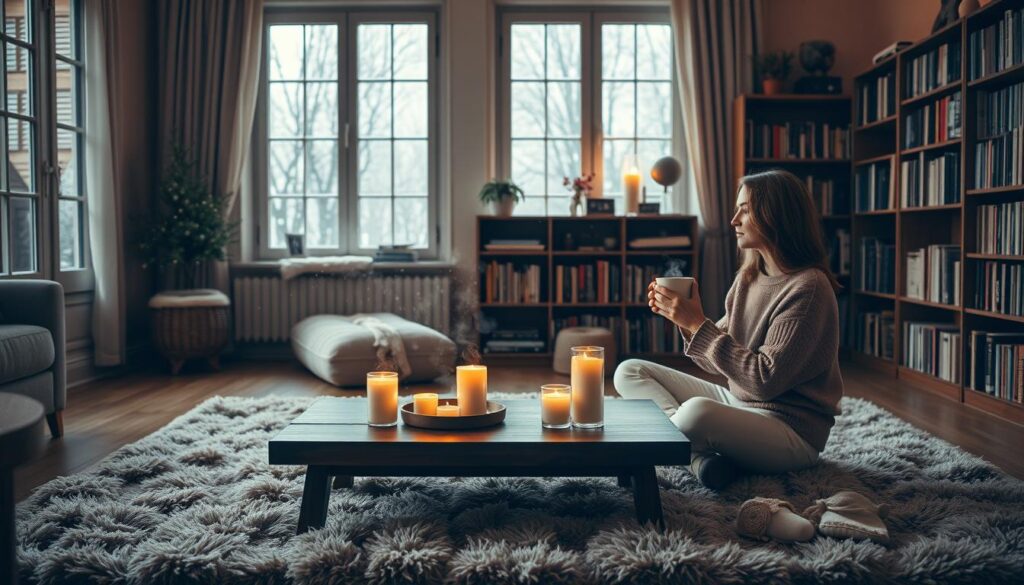
By adding these rituals to our lives, we can deepen our hygge. This leads to a more mindful and compassionate way of living.
Mindfulness and Hygge: A Unified Approach
Mindfulness and hygge together bring calm and well-being into our lives. This mix helps us enjoy the simple things around us. It teaches us to be in the moment.
The Importance of Presence
Being present is key in both mindfulness and hygge. It means we let go of distractions and focus on now. We notice small joys like a warm cup of coffee or the sound of rain.
To be present, add simple mindfulness to your day. Try focusing on your breath or mindful walking. These practices help us appreciate the little things.
Key practices for presence include:
- Meditation: Regular meditation keeps us focused.
- Deep Breathing: Slow, deep breaths calm our minds and bodies.
- Engaging Senses: Notice your senses to fully experience the moment.
Mindful Eating and Drinking
Mindful eating and drinking are big parts of hygge. They make us enjoy our food and drinks more. By eating mindfully, we enjoy meals more and digest better.
To eat mindfully, try these tips:
- Slow down: Eat without distractions like TV or phones.
- Savor flavors: Notice the taste, texture, and smell of your food.
- Express gratitude: Think about the effort in making your meal and its nourishment.
Mindful eating and drinking turn meals into moments of joy. This boosts our mental health and well-being.
Hygge and Connection: The Role of Relationships
Hygge is more than just being cozy. It’s about enjoying moments with the people we love. This way, we build stronger, more meaningful relationships.
Building Meaningful Connections
At the core of hygge is making connections with others. It’s about being there for each other, laughing, and making memories. Here’s how to build these connections:
- Spending quality time with family and friends
- Engaging in activities that promote bonding, such as cooking or playing games together
- Practicing active listening to show you value others’ thoughts and feelings
By doing these things, we grow our social bonds. These bonds are key to our happiness and holistic health practices.
Hosting Cozy Gatherings
Hosting cozy gatherings brings people together. It creates a space for connection and conversation. Here are some tips to make your gatherings special:
- Create a warm and inviting atmosphere with soft lighting and comfortable seating.
- Prepare comforting foods and drinks that promote relaxation and togetherness.
- Encourage meaningful interactions by planning activities that foster connection, such as group games or storytelling.
By hosting these gatherings, we strengthen our relationships. We also build a sense of community and belonging. This is vital for our self-care and wellness.
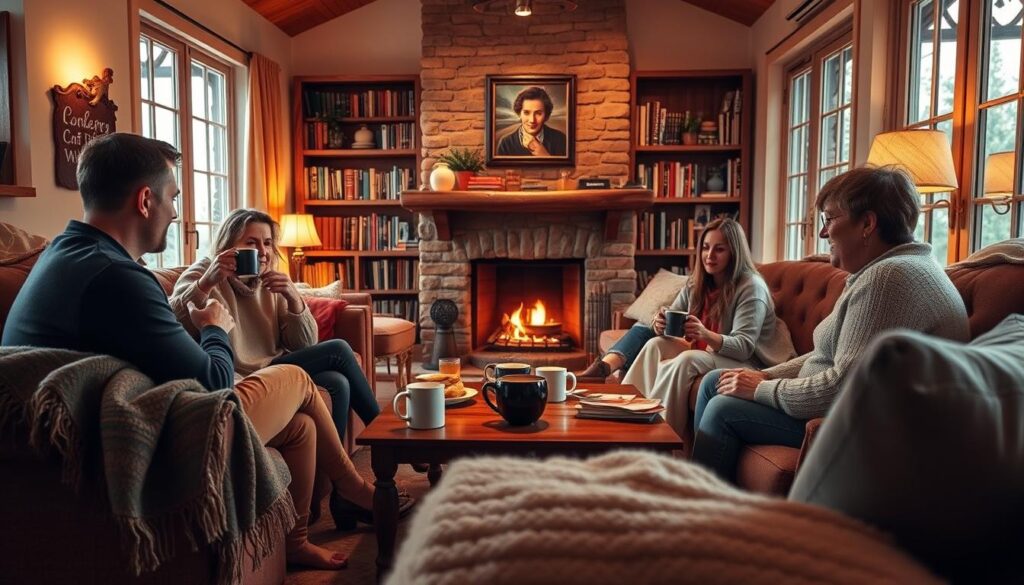
Embracing hygge shows us that it’s not just about self-care. It’s also about connecting with others. By building strong connections and hosting cozy gatherings, we make our lives and the lives of those around us richer. We foster a deeper sense of wellness and togetherness.
Nourishing Your Body with Hygge
Hygge isn’t just about cozying up at home; it’s also about nourishing your body. Comforting meals and warm drinks are key to self-care and relaxation. We’ll see how the food we eat affects our well-being and stress levels.
Comfort Foods that Heal
Comfort foods offer a warm hug, soothing us in tough times. Warm soups, stews, and baked goods are more than just tasty; they heal. These dishes remind us of home and childhood, bringing safety and love.
Some comfort foods that heal include:
- Creamy tomato soup
- Homemade chicken noodle soup
- Warm apple crisp
Recipes for Hygge-Inspired Meals
Cooking hygge-inspired meals is a calming activity. It lets us slow down and enjoy life’s simple things. Traditional Danish dishes, hearty stews, and warm baked goods capture the hygge spirit.
Here’s a simple recipe to start:
“Try cooking a hearty beef stew with root vegetables. Simmer it slowly, filling your home with the scent of tender meat and fresh herbs.”
Cooking with love is central to hygge. By focusing on nourishing meals and enjoying each bite, we appreciate life’s simple joys more.
Eating hygge-inspired foods nourishes our bodies and souls. This mindful eating can be a strong stress management technique, boosting our well-being.
Outdoor Hygge: Finding Comfort in Nature
Outdoor hygge is about finding comfort and peace in nature. When we embrace the outdoors, we find serenity and connect with nature.
Doing self-care activities outside can uplift us. Whether it’s having a picnic, going for a walk, or sitting in a garden, nature’s impact on our well-being is profound.
Cozy Outdoor Activities for All Seasons
Outdoor hygge isn’t just for one season. In summer, we can enjoy warm evenings with outdoor gatherings or stargazing walks.
- Spring: Planting a garden, having a picnic
- Summer: Outdoor gatherings, stargazing
- Autumn: Taking a hike, enjoying the foliage
- Winter: Sipping hot cocoa by a fire pit, enjoying snow-covered landscapes
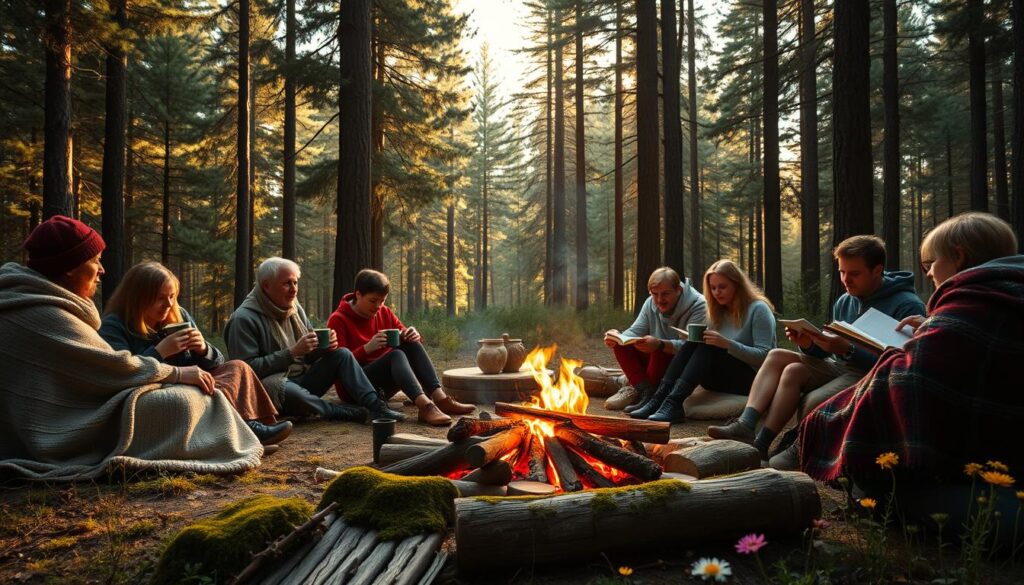
Nature’s Role in Wellness
Nature is key to our wellness resources. Being outside reduces stress, boosts mood, and improves well-being.
| Season | Nature’s Benefit | Hygge Activity |
|---|---|---|
| Spring | Renewal and growth | Gardening |
| Summer | Warmth and vitality | Outdoor gatherings |
| Autumn | Harvest and reflection | Walking among foliage |
| Winter | Rest and rejuvenation | Sipping hot cocoa by a fire pit |
By embracing outdoor hygge, we deepen our connection with nature. This enhances our overall well-being.
Embracing Imperfection through Hygge
When we start to live hygge, we let go of needing everything to be perfect. We find beauty in the everyday and live more mindfully. This change helps us focus on now, not some ideal future.
Releasing the Pressure
Breaking free from the need for perfection is freeing. It lets us relax and lower our stress levels. We can then enjoy life’s little things and see the beauty around us.
Simple Joys
Hygge is all about finding happiness in small moments. It might be a warm coffee or a quiet walk. These moments can deeply improve our mental health.
By adding mindfulness tips like gratitude and being present, we grow more positive and strong. This journey changes how we see the world, making us happier and more fulfilled. Embracing imperfection and simple joys leads to a more real and meaningful life.
FAQ
What is hygge, and how can it improve my self-care routine?
Hygge is a Danish philosophy that celebrates the cozy aspects of life. It encourages you to slow down and appreciate the simple things. By adding hygge to your self-care routine, you can make your space cozier and more mindful. This promotes relaxation and helps reduce stress.
How can I create a hygge-inspired space at home?
To create a hygge-inspired space, start with soft lighting and comfy furniture. Use warm textiles and choose colors that relax you, like muted tones or earthy colors. Make sure to use natural light to enhance the atmosphere.
What are some daily hygge practices I can implement?
Daily hygge practices include enjoying a warm cup of coffee or tea in the morning. You can also take a relaxing bath before bed or simply appreciate the beauty around you. These rituals help you care for yourself and be more mindful.
How does hygge relate to mindfulness and presence?
Hygge and mindfulness share a common goal: to encourage presence and appreciation for the moment. By combining these practices, you can feel calmer and more well-being. This can also improve your mental health.
Can hygge be experienced outdoors, or is it limited to indoor activities?
Hygge is not just for indoors. You can enjoy cozy outdoor activities like having a picnic or going for a walk. These activities can uplift you and help you appreciate nature’s beauty.
How can I incorporate hygge into my relationships and social connections?
Hygge encourages nurturing relationships and building meaningful connections. Host cozy gatherings and spend quality time with loved ones. Being present in your interactions fosters a sense of community and togetherness.
What role does food play in hygge, and how can I use it to nourish my body?
Comfort foods like warm soups or baked goods can offer solace and comfort. Exploring hygge-inspired recipes, such as traditional Danish dishes or hearty stews, can be therapeutic. It nourishes both your body and soul.
How can I make hygge a part of my self-care routine during different seasons?
Seasonal traditions, like cozying up by the fireplace in winter or enjoying outdoor picnics in summer, are key to hygge. Embracing the changing seasons and adding hygge-inspired activities helps you appreciate life’s simple pleasures.
Can hygge help me let go of perfectionism and find joy in simple moments?
At its core, hygge is about embracing imperfection and finding joy in simple moments. By letting go of perfectionism and appreciating everyday beauty, you can live more mindfully and acceptingly.
Transform your home into a more peaceful and mindful sanctuary. Creating a Zen-inspired home environment is a core part of the “Live.Learn.Create” theme, focusing on peace, mindfulness, and a clutter-free space. Here is a curated list of Zen home items.
The Zen Essentials
These items are the building blocks of a calm, intentional living space.
- Candles & Scents:
- Scented Candles: Look for calming, natural scents like sandalwood, lavender, white tea, or bergamot. Choose candles made with soy or beeswax for a clean burn.
- Essential Oil Diffusers: A minimalist, sleek diffuser made of bamboo, ceramic, or glass.
- Essential Oil Sets: Look for blends specifically for relaxation, focus, or sleep.
- Incense & Burners: Natural incense sticks (e.g., palo santo, sage) with a simple, elegant burner.
The Zen Decor
This is about incorporating natural elements and simple design.
- Natural Materials:
- Wood or Bamboo Trays: For organizing candles, stones, or other small items.
- Ceramic Vases: Simple, unglazed ceramic vases in neutral colors like white, beige, or gray.
- Minimalist Art: Simple line drawings, abstract prints, or nature-inspired artwork.
- Hand-Carved Stone Coasters: Or other small stone sculptures.
- Textiles:
- Linen or Cotton Throws: A soft, neutral-colored throw blanket to add warmth.
- Jute or Sisal Rugs: These add natural texture and grounding to a space.
- Meditation Cushions (Zafu) & Mats (Zabuton): These provide comfort for meditation and add a serene touch to a room.
The Zen Ambiance
These items help create a peaceful sensory experience.
- Lighting:
- Himalayan Salt Lamps: These provide a warm, soft glow.
- Japanese-style Paper Lanterns: For a soft, diffused light source.
- Dimmable Smart Bulbs: To easily control the warmth and brightness of your lighting.
- Sound:
- Tabletop Water Fountains: The gentle sound of running water is incredibly calming.
- Wind Chimes: Made from natural materials like bamboo or metal for a soft sound.
- Bluetooth Speakers: Small, aesthetically pleasing speakers for playing ambient or meditation music.
- Nature:
- Bonsai Trees or Air Plants: Low-maintenance indoor plants that bring life and a touch of nature indoors.
- Zen Gardens: A small, tabletop sand garden with a rake and stones for a meditative ritual.
- Decorative Rocks & Pebbles: For bowls or as a decorative element.
Best Sellers https://amzn.to/3Vet1tI
New Releases https://amzn.to/4mwLjTi
Amazon Movers & Shakers https://amzn.to/4fPsZlP
Mindfulness Coloring Books https://amzn.to/4fQ0wMx
Personal Growth Coloring Books https://amzn.to/4lJeRf0
Health & Wellness https://amzn.to/4oRt24C
Zen Home Decor https://amzn.to/3VeA3i6
Zen Garden Decor https://amzn.to/4mXjT8D
Zen Garden https://amzn.to/3HQTVVB
- Mindfulness & Meditation:
- Physical Wellness:
- Habit & Productivity Tools:
- Books:
- Best-selling personal development books (Mindset, The 7 Habits of Highly Effective People, The Subtle Art of Not Giving a F*ck)
- Books on a variety of skills (coding, photography, writing.)
- Educational Gadgets:
- Smart pens that digitize notes (e.g., Rocketbook)
- Portable scanners for digitizing documents
- Laptops, tablets, and accessories
Create (Creativity, Innovation, Projects)
These products cater to your creative side, whether you are a artists, writer, or DIY enthusiasts.
- Creative Supplies:
- Adult coloring books or “paint-by-sticker” books
- Craft kits (e.g., candle-making, pottery, embroidery)
- Digital Creation Tools:
- General Inspiration & Making:

